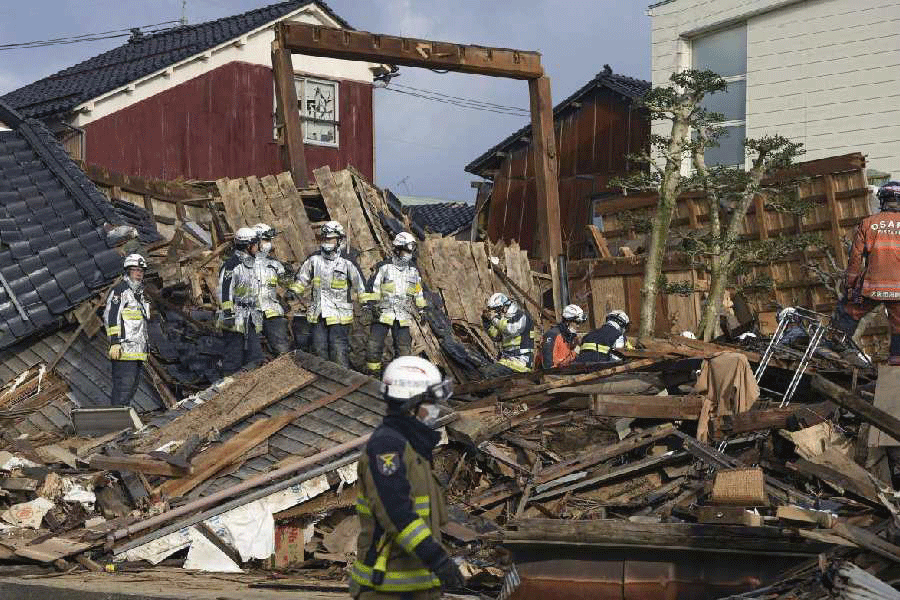Police and other rescue workers pulled a woman in her 90s out from under a collapsed house on Saturday in western Japan, five days after a powerful earthquake struck the region, killing more than 126 people.
Few details were available, but video footage showed a fleet of rescuers surrounding the site in Suzu, one of the hardest-hit villages. According to the Metropolitan Police Department cited by the Yomiuri newspaper, the woman appeared to be suffering from hypothermia but was responsive.
The woman, who was not identified, had been trapped underground beneath the first floor of a two-storey house. She was rescued around 8.20pm and taken to the hospital, according to officials in the crisis management office of Ishikawa prefecture, where Suzu is located.
According to Ishikawa officials, the fire brigade and an attending doctor said the woman had suffered injuries to her legs. NHK, Japan’s public broadcaster, reported that she was able to speak on Sunday morning.
The window for finding earthquake survivors is typically three days, experts say, though it is possible to survive longer, depending on factors such as temperature, access to water or food and how the victim is trapped.
Since Monday’s earthquake, which registered a magnitude of 7.6 on the Japanese seismic intensity scale, the death toll has steadily risen as more bodies have been discovered beneath collapsed or burned buildings. Rescuers are still racing to find those unaccounted for in rainy conditions, with forecasts for snow looming along the Noto Peninsula. At least 222 people are still missing.
On Tuesday, a Coast Guard plane on its way to deliver supplies to the region collided with a Japan Airlines jet on a runway in Tokyo. Five of the six people on board the Coast Guard craft died in the crash, while all the passengers and crew on the other plane escaped their burning jet without major injury.
New York Times News Service











